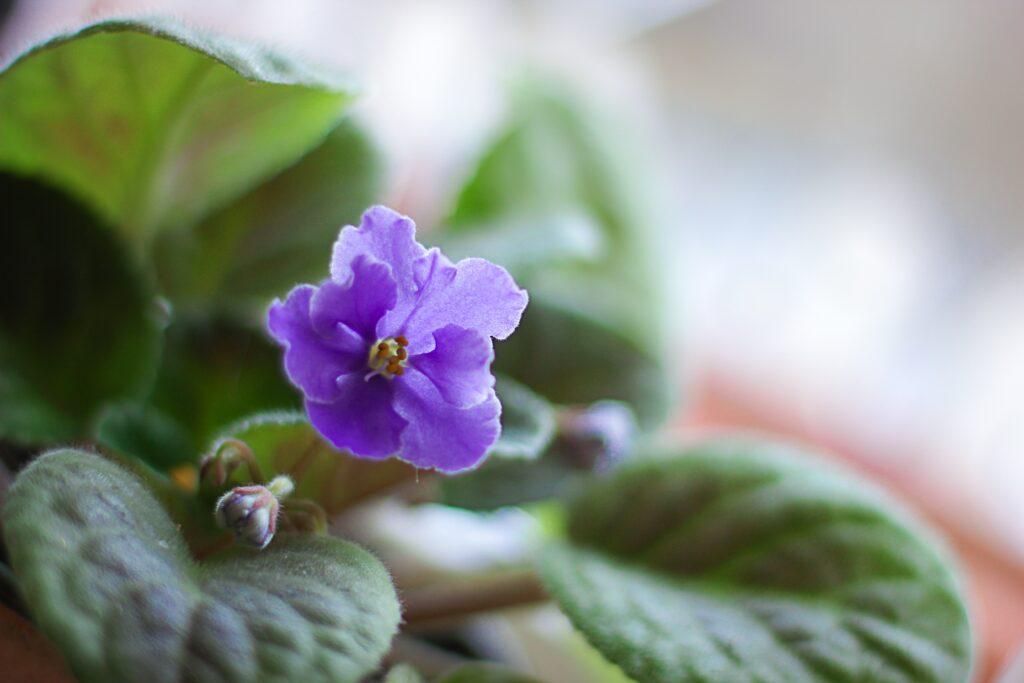
Indoor plants do wonders beyond just beautifying your space. They’re a fantastic way to make your home feel warm and inviting, all while being friendly companions to your pets. These leafy friends aren’t just nice to look at; they help clear out those sneaky toxins that might linger in the air. You’d be surprised how much cleaner and fresher your home can feel just by inviting a few plants inside.
Houseplants play a significant role in purifying the air we breathe. They have this amazing ability to filter out common indoor pollutants like formaldehyde and benzene, which can make a world of difference for everyone’s health, including our furry companions. By improving your home’s air quality, you’re not only ensuring a healthier environment for your pets but also for everyone who steps inside your home.
Besides improving air quality, these plants have a knack for creating tranquil spaces. Walking into a room filled with lush greenery can instantly sweep away the stresses of the day. They add an element of calm and serenity that seems to resonate with both us and our pets. There’s just something about being surrounded by nature, even indoors, that helps put us at ease.
But it’s not just about aesthetics and clean air. Plants have a remarkable way of boosting our mental health. Several studies suggest that interacting with plants can reduce stress and anxiety. This effect is beneficial for every member of the household, including our pets who often tune into our emotional states. A home adorned with thriving greenery can help maintain a balanced and peaceful atmosphere, crucial for both human and animal well-being.
Top Non-Toxic Indoor Plants Safe for Cats and Dogs
When you’re looking to bring the outside in without worrying about your pets’ safety, there are plenty of non-toxic plants to consider. Some species not only ensure pet safety but also add a touch of natural beauty to your home.
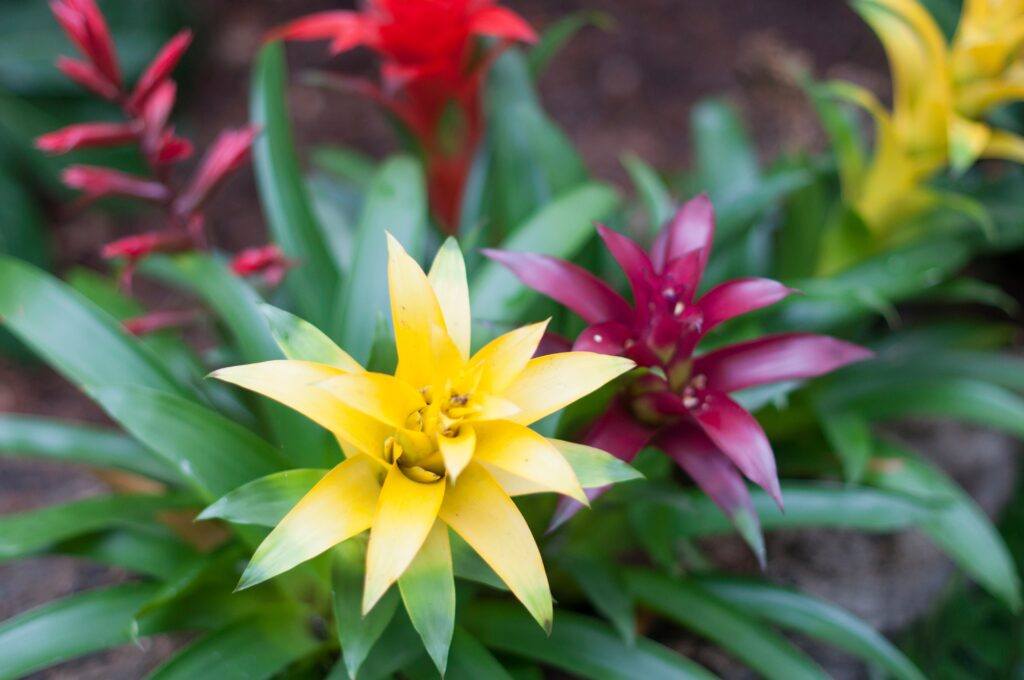
Bromeliad
A great, and popular pet-friendly option is the Bromeliad, which is one of the most unique and rewarding plant families you can grow. Whether you’re a seasoned plant enthusiast or just starting out, be sure to check out the information on Bromeliads.

Prayer Plant
Prayer plants are non-toxic and beautiful—just be sure to follow basic tropical plant care tips to keep them thriving indoors.
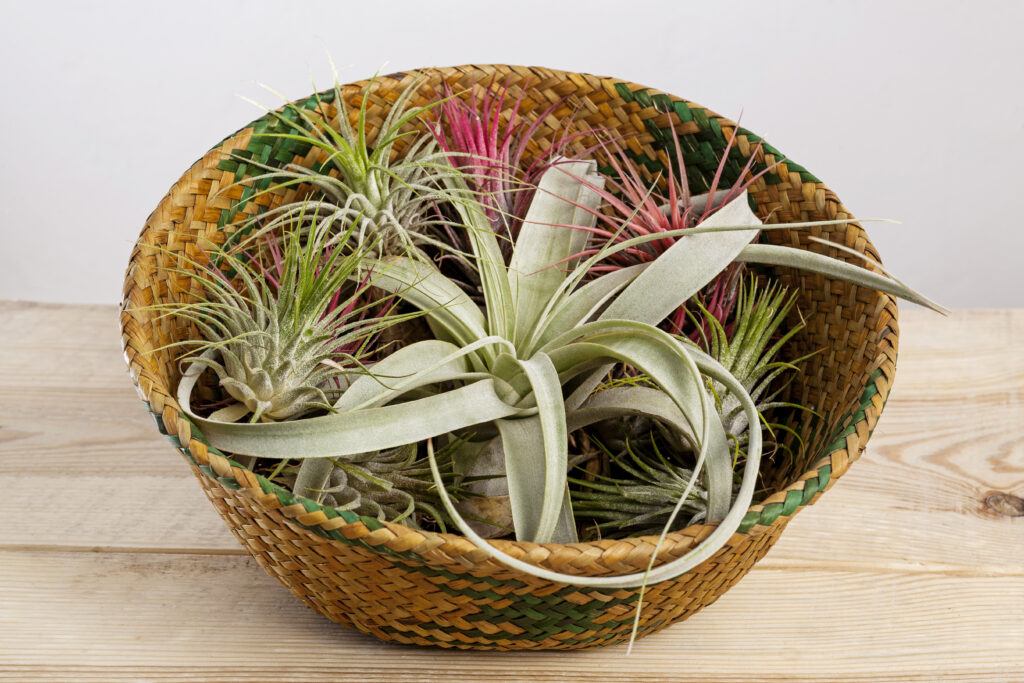
Tillandsia Xerographica
Tillandsia Xerographica, often called the “King of Air Plants,” is another pet-friendly plant. You can learn about this beauty and other varieties in 5 Airplants for Beginners.
While selecting plants, it’s crucial to check for any parts that could be harmful if chewed. Even though these plants are non-toxic, overconsumption could cause tummy troubles for your pet. Always have a vet’s number handy for any emergencies, just to be safe.
It’s worth considering the habits of your pets when choosing which plants to bring home. If you have a particularly curious cat or a puppy that loves to chew, it might be better to hang plants or place them on high shelves. This way, you can enjoy the greenery without worrying about your pet’s curiosity.
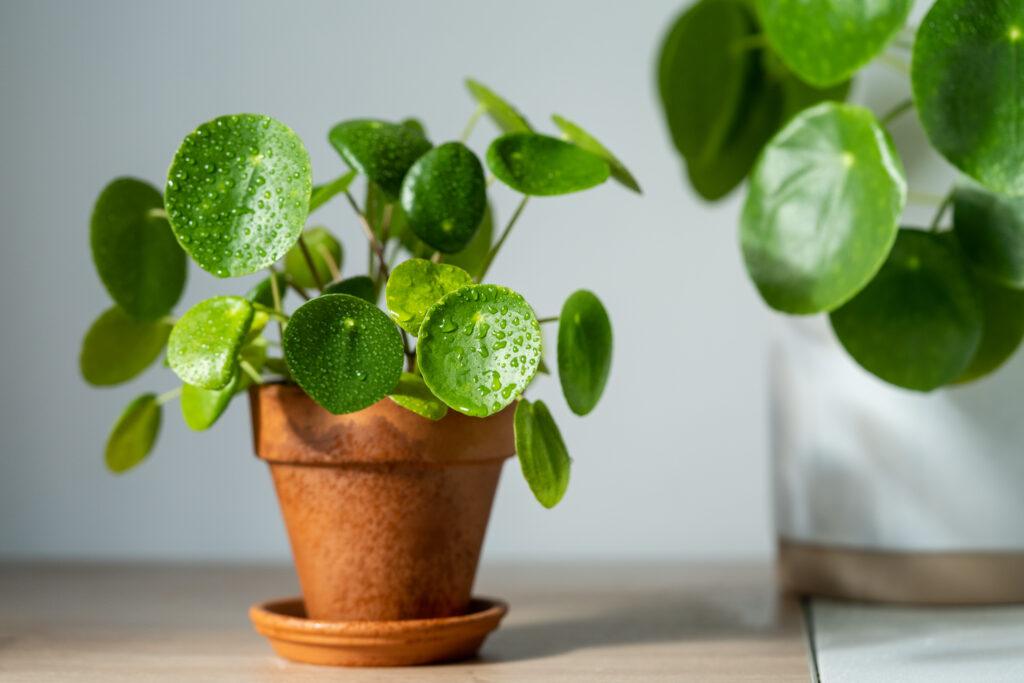
Plants That Are Both Safe and Beneficial for Children and Pets
Bringing houseplants into homes with children and pets can be both rewarding and safe. It’s important to select varieties that ensure everyone stays out of harm’s way, while also enjoying the beauty plants bring. The Parlor Palm is an excellent choice. This plant is perfect for kids who are just starting to explore nature. Its soft fronds are gentle to touch and pose no risk, making it a fantastic starter plant for budding young gardeners.
Beyond being non-toxic, many of these plants offer fantastic learning opportunities for kids. Caring for something living helps teach responsibility and patience. You can turn plant care into a game, like seeing whose plant grows the tallest or has the greenest leaves. This not only keeps kids engaged but also instills in them a love and respect for nature.
Engagement goes beyond basic care. Have them join in on watering routines or repotting—kids love getting their hands dirty! Through these activities, they can better understand concepts like growth, life cycles, and even the importance of keeping our environment clean and sustainable.
For added interaction, consider growing a small herb garden indoors with safe options like basil and parsley. These herbs can encourage conversations about flavors and cooking, making dinner prep a family affair. Plus, they’re non-toxic, which takes the concern out of the experience.
Maintaining a Safe and Harmonious Space with Indoor Plants
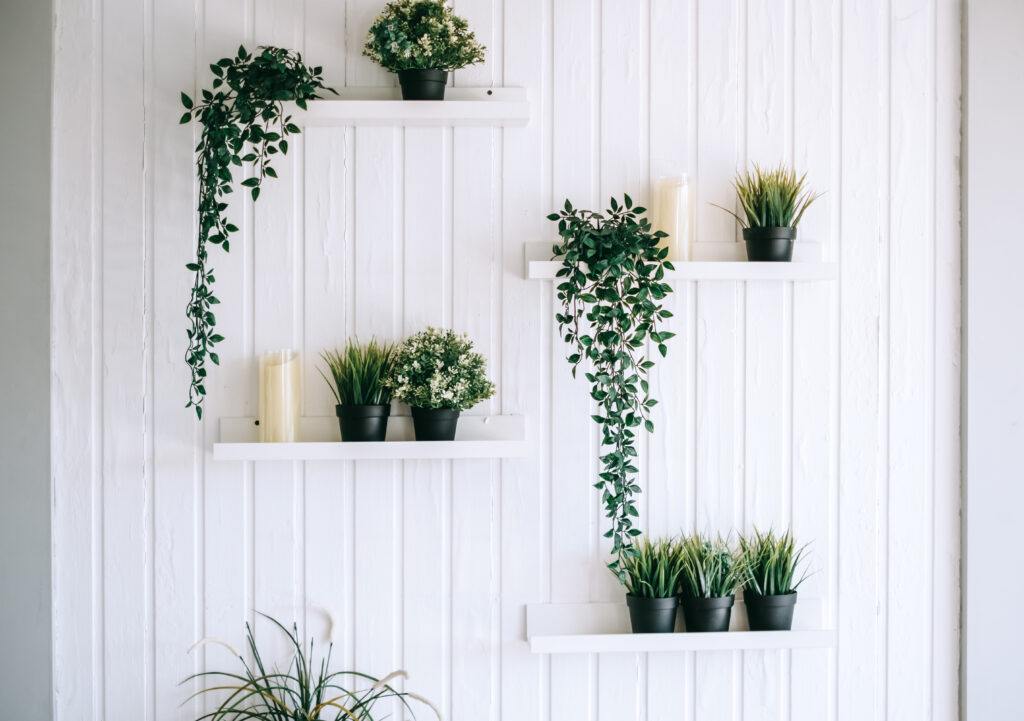
Keeping plants within homes that are constantly buzzing with kids and pets is all about balance and smart placements. For those curious pets that love to explore, it’s helpful to use plant stands or wall shelves that keep these botanical beauties out of easy paw reach. It’s a simple tweak but can make all the difference in maintaining a harmonious home.
Regular upkeep isn’t just about watering but includes a check on plant health too. Wilting leaves or disease not only affect the aesthetics but could pose risks if ingested by curious little ones. A quick weekly check can help prevent any unwanted surprises, keeping your indoor garden thriving and safe.
Consider the creative side of plant placement by utilizing hanging baskets. Not only do these add dimension to your décor, but they keep the leaves high and away from playful pets. This way, you get to enjoy the lush greenery while also keeping things hazard-free.
For those looking to dive deeper into home gardening alongside their pets, countless resources are available online and through local nurseries. Whether it’s advice on non-toxic plants or tips on creative plant arrangements, there’s a whole world of knowledge out there for every plant enthusiast.
With these insights and a bit of creative thinking, having a home filled with thriving plants can be both rewarding and completely safe for all family members, two-legged or four.
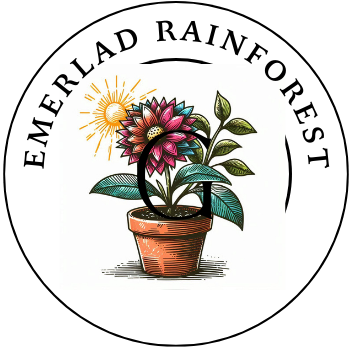
Finding non-toxic indoor plants has always felt like walking a fine line between style and safety, especially in a home with curious pets. What’s striking is how many beautiful options are actually pet-safe if you know where to look. I’ve had to swap out a few favorites over the years after learning they were harmful, so I really appreciate discussions like this that balance aesthetics with responsibility. It also makes me wonder how plant placement factors into safety, are there plants that are technically toxic but safe if kept out of reach, or is that too much of a risk? This kind of insight really helps make more informed decisions.
Slavisa,
Thank you for your comment. As you stated, some indoor plants can be toxic for people and/or pets. I would say that if there are only adults and older children in the home it may be ok, but if young children or pets live there, it is probably a good idea to avoid toxic ones.
Yo Kathryn,
OMG, I just read your article about pet-friendly plants and it was, like, totally awesome! You hit the nail on the head with how plants make the air better, chill out the vibe, and even make you feel happier. Seriously, who knew plants could be so cool for both us and our pets?
And those plant suggestions? Spot on! Boston Fern, Prayer Plant, Christmas Cactus, Parlor Palm—definitely gonna check those out. It’s super helpful to know which ones won’t make my fur babies sick.
Your tips about where to place plants and how to take care of them were clutch too. Plant stands and hanging baskets? Genius! And yeah, gotta keep an eye on them so no one gets into trouble.
I also thought it was really cool how you talked about plants teaching kids stuff. Like, responsibility and patience? Totally makes sense. And growing herbs like basil and parsley indoors? That’s, like, next-level cool for cooking and hanging with the fam.
You’ve totally inspired me to get some more plants for my place. Do you have any faves that you’ve had good luck with? I’d love to hear about it!
Thanks for sharing all this awesome info. I bet tons of pet owners are gonna find this super helpful for making their homes green and safe for their pets.
Later,
Eric
Eric,
Thanks for your response to my article. I found myself smiling when I read the line about chilling out the vibe. I have so many favorite plants that I’ve had good luck with. Some of them are Christmas catus (or any cactus), orchids, anthurium, pothos, philodendron, succulents, I kinda like them all.
This was such a helpful post—thank you, Kathryn! I’ve been wanting to add more greenery to my house but always worried about what might be unsafe for my dog.In fact, I purchased some calla lilies and then realised they are not good for dogs. I had to give them away to a dog-free house. Your list of pet-friendly plants is exactly what is needed. I especially love the idea of hanging baskets and incorporating herbs like basil and parsley. Do you have a favourite low-maintenance herb that works well indoors year-round?
Leslie,
I’m glad you found my article informative and helpful. I was just looking at some of my calla lilies, thinking about writing an article about them because they are so beautiful. I’m sorry you had to give yours up; but we do everything we need to keep our puppies safe. Fortunately, mine are in a fenced area the dogs can’t get to.
As for herbs, I love rosemary, lavender, and basil. These grow well indoors with the right lighting and other needs. You might want to check out my article “Grow Herbs Indoors” for questions about their care.